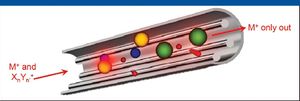Articles by Meike Hamester

With recent research, the University of Oviedo's analytical spectrometry research group has taken a step closer to the absolute quantification of proteins. Quantification based upon isotope dilution mass spectrometry of sulfur is hampered by gas-based polyatomic interferences. By implementing a quadrupole inductively coupled mass spectrometer with collision/reaction cell technology, the group has been able to overcome the issues and has increased reliability while optimizing the efficiency of its analyses.

Inductively coupled plasma–mass spectrometry (ICP-MS) is a mature method that offers reliable measurements across almost the entire periodic table. It has been established as the key methodology for investigating elemental concentrations, which play a central role in biological, environmental, chemical, and industrial processes. ICP-MS is capable of performing multielemental analyses in a single analytical run, achieving an overall productivity of more than 50 samples/h. The method also delivers lower detection limits compared to graphite furnace atomic absorption (GFAA) or inductively coupled plasma–optical emission spectrometry (ICP-OES).




